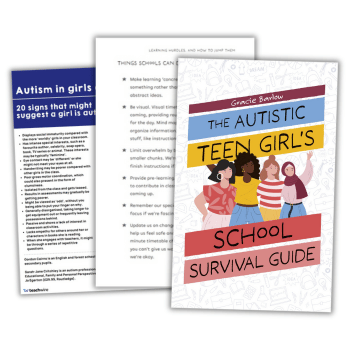Dealing With Dyspraxia - What To Do When ‘Doing’ Is Difficult

Could those outward signs of clumsiness point to dyspraxia, and if so, how should teachers respond? Veronica Bidwell takes a closer look…

Mark is 8 years old. He reads well, is bright and talkative and always has a lot to contribute to class discussion.
However, he is getting into a lot of bother because he finds it hard to sit still. His written work is also always messy and his handwriting poor, with letters of different sizes often squashed together and frequently going off the line.
Mark can be relied upon to be the last child to get changed for PE and generally keeps the class waiting. He is never picked to be on a games team as he just can’t throw, catch or kick a ball successfully. His class teacher is perplexed – why does this bright boy seem to take so little trouble? He comes across as not wanting to make an effort, which has the result of annoying his peer group. His mother says he is tired out and often angry when he gets home.
What his teacher doesn’t know is that Mark is an undiagnosed dyspraxic. Until this specific learning difficulty is diagnosed and he gets appropriate help, he will continue to become increasingly alienated, frustrated and despondent.
Thoughts and perceptions
The good news, however, is that there is much teachers can do to support pupils with dyspraxia. A lawyer I know by the name of Abigail, who I first met when she was a disruptive 12-year-old, once told me that it was the small changes her teachers and parents made in response to her dyspraxia diagnosis that had greatest impact on her ability to cope and thrive.
At its simplest, dyspraxia refers to difficulty with motor coordination – ‘Dys’ meaning ‘difficulty’ and ‘praxia’ meaning ‘doing’. The condition can also be referred to as developmental coordination disorder (DCD) and was in the past previously known as ‘clumsy child syndrome’.
Whilst dyspraxia is primarily a developmental coordination difficulty, it gets more complicated. It manifests as an immaturity in the coordination of movements, but can also affect perception and thought processes. It might cause younger children to struggle with performing physical actions in sequence, such as those required to clean their teeth or get dressed, for example. Teenagers, on the other hand, might struggle with planning and organising the higher order mental activities needed for tasks such as writing an essay, planning revision and drawing up a timetable.
Dyspraxia is on a continuum. The difficulties experienced by individuals with the condition may be serious or mild, and can be easily confused with dyslexia, attention deficit disorder or even a subtle communication difficulty. This is because there is much overlap in the signs and symptoms of each area of difficulty, and often they will not be mutually exclusive. It is estimated that between 2 and 8% of pupils may experience dyspraxia, with boys outnumbering girls by four to one.
What teachers can do
The earlier description of Mark conveys some of the key difficulties a young person with dyspraxia may experience. As children get older and the demands of school become greater, more areas of difficulty are likely to emerge. Poor planning and organising may become an ongoing issue. Copying from the board and other sources is likely to be slow and inaccurate. Their grasp of maths can be impacted, structuring and executing written work may not come easily, and there will often be a gulf between what the child knows and understands and his ability to express this in writing.
So what can teachers do? First, raise any observations you’ve made with parents and see if they have noticed anything themselves, or have any concerns. Work with parents to establish the best way forward and consider obtaining an occupational therapist’s assessment and intervention.
In class, ensure the child has enough time to complete work that involves fine motor skills, and consider using modified equipment. Some children might find that a sloped desk, special pen or wobbly cushion helps them – an occupational therapist will be able to advise. Think also about organising physical activities based around helping to develop and improve physical strength and coordination.
When issuing verbal directions and instructions to children with dyspraxia, do so bit by bit with no more more than two or three points at a time. Try not to chastise a child too much if he or she is slow to complete self-help activities such as changing for PE lessons. It may be worth asking the parents to provide their child with Velcro shoes or trousers with an elasticated waist. Give him or her a head start.
Putting in the effort
Remember to also give plenty of positive feedback when the child makes a good effort, along with lots of encouragement. I have heard many young dyspraxics tell me that they have given up bothering, because however hard they try, their untidy and poorly presented work will always be criticised and never given praise for good content. Similarly, their untidy appearance and clumsiness is often misinterpreted as deliberate lack of effort and respect.
Instead, teachers can help by marking for content rather than presentation and giving sufficient time for the pupil to copy from the board. Typed notes should be provided where possible, and they should be given additional time to finish tests and exams.
Try breaking complex tasks down into achievable chunks, and make a point of recognising when the pupil has clearly put effort into their work, even if their progress is slow and the end results messy. Try to modify their homework assignments where appropriate, and help the pupil develop strategies to manage their equipment and stay organised.
All dyspraxic pupils should have the opportunity to learn touch typing and use laptops to complete written work. This should start in primary school and continue into secondary.
Pupils like Mark can and will thrive if they feel valued and are supported to find effective strategies to manage their particular areas of difficulty.
Spotting the signs of dyspraxia
Fine motor skills
Difficulty with managing buttons, zips and laces and using scissors and cutlery. Colouring in and pencil control may be weak and handwriting will be poor. Letters may appear squashed and uneven in size. Books are likely to look messy, and the pupil will dislike having to write.
Gross motor skills
A tendency to appear clumsy and uncoordinated, with obvious difficulties in throwing and catching during ball games. The pupil may have difficulty in disassociating movements, making dance and PE classes hard.
Visual/spatial ability
Confusion in distinguishing left and right and lack of interest in puzzles and construction toys. Copying off the board may be a challenge, and aspects of maths with a spatial component will be difficult. As the pupil gets older, they may find maps and diagrams hard to follow.
Self-help skills
Dressing can be slow; clothes may go on inside out and in the wrong order.
Organisation and sequencing
The pupil may find it hard to follow class and playground rules and have little sense of time. Structuring their written work will often be a struggle, and they may have a tendency to lose or forget their belongings.
Social interaction
The pupil may exhibit immature behaviour, struggle to read body language and not react appropriately to facial expressions. He or she may sometimes overdo things, coming across as too rough, socially gauche and not knowing when enough is enough, while at the same time being easily distressed and emotional.
About the author
Veronica Bidwell is an educational psychologist and the author of The Parents’ Guide to Specific Learning Difficulties, published by Jessica Kingsley Publishers











